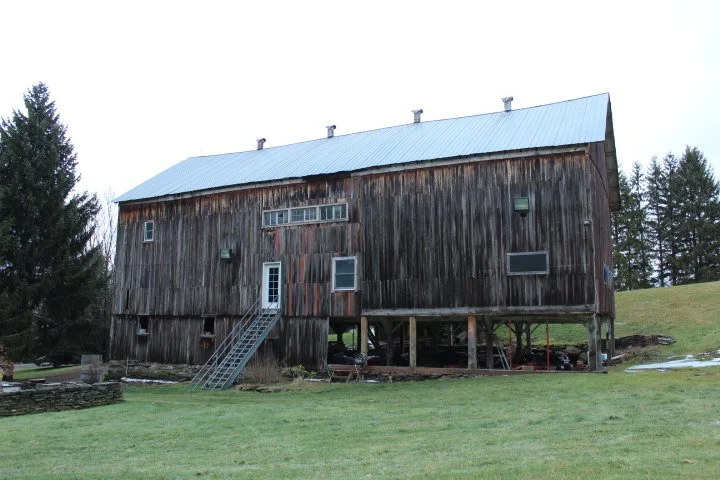Bank Barn
The most distinctive structure on the property is the former dairy barn: the factory of the dairy farm. It functions now as a rather vast space for parties, dancing, music and games.
This type of dairy b arn is called a “bank barn” and it closely resembles virtually every other barn in the region, all of which are located next to a small knoll, an embankment that enables, with the addition of a stone ramp and a short bridge, access for a wagon to the barn’s third level. All such dairy barns are organized in the same way: 1) the cows live their entire lives on the ground floor; 2) two enormous hay lofts occupy the second level, from which hay and corn can be dropped to the cows below; 3) the ramp and barn bridge lead onto a “bridgeway” from which hundreds of hay bales can be thrown or moved by rope and hook into the hay lofts. The entire structure of hemlock posts and beams is exposed in the interior of the barn. With the end of farming at each individual farmstead, its barn enters a perilous situation. A barn’s roof is difficult and expensive to maintain and any almost any leak, if not repaired, will eventually lead to decay and the barn’s collapse. In fact, although hundreds of former dairy barns can be seen in every part of Delaware County, most of its 19th century barns are gone or in ruins, except for their virtually indestructable stone ramps. Most owners cannot justify the expense of maintaining an old barn for which no adaptive re-use can be found beyond storage. Maintenance equipment has replaced the cows in the ground floor of our barn, but the hay lofts are just vast empty volumes of space. They are wonderful places for music and dancing and once-a-year games of Barnball.

